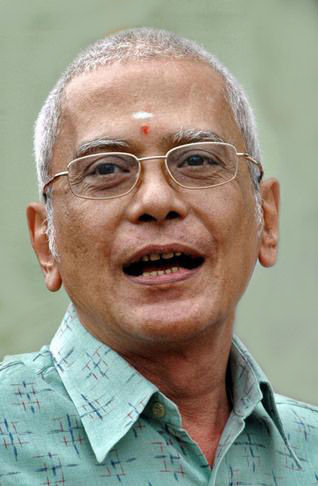Live
- Sri City celebrates Vaikuntha Ekadasi with spiritual grandeur
- US wildfires: Lower access to air conditioning ups emergency care risk, finds study
- PM Modi to inaugurate Z-Morh Tunnel on Jan 13, boosting all-weather connectivity in J&K
- Telangana Legislative Assembly Speaker Visits Tirumala on Vaikuntha Ekadashi
- Amazon.in Great Republic Day Sale: Exciting Deals on the Latest Smart TVs
- SPMVV signs MoU with TACA
- Joint action plan to avoid stampede incidents in future: Anam
- Cold wave continues, light rain, snow forecast in J&K
- Pravasi Bharatiya Divas Exhibition opens to public in Bhubaneswar
- DIG refutes claims of police resource diversion to Kuppam
Just In

Looking at crime and punishment
Crime has existed since the dawn of time. However, methods chosen by society to combat and contain it have, at different times, responded to the imperatives of varying demands
Crime has existed since the dawn of time. However, methods chosen by society to combat and contain it have, at different times, responded to the imperatives of varying demands. While, on some occasions, such response was a reflection of the socio-cultural imperatives, at other times it was just an example of humanity at play. Crime and punishment, on one hand, and the development of humanity, on the other, have always been interlinked.
Originally, mankind saw revenge as a valid form of punishment. Over time, the rules of law and justice systems guided humanity, which comprised societies which were civilised entities. The 'eye for an eye' approach not being an acceptable way of dealing with those who infringed the provisions of law, reliance on criminal justice systems which played a huge role in society, came to stay as their primary aim was to reduce crime by bringing criminals to justice.
In early times punishments were often doled out by the victims of crimes as revenge or payback. But punishment often was too severe, and resulted in the victims turning criminals, seeking revenge on their own. That vicious cycle led to blood feuds between families, not unlike what happens between the so-called' factions' in the Rayalaseema region of Andhra Pradesh, even to this day.
Over time, however, people realised that families seeking revenge on each other was not a healthy system and brought in laws regarding crime and punishment, laws so designed that punishment matched crime. The code of Hammurabi became one of the first legal codes to be established, and modern criminal justice is still influenced by it.
The thinking of early Greek philosophers, such as Plato and Aristotle, majorly influenced the manner in which crime and punishment are looked at today i.e. based on the tenets of jurisprudence and the principles of natural justice. They also helped humanity understand that the reasons for the commission of a crime such as this intention and the provocation, should be an important factor in deciding how severe the punishment should be. They also emphasised the preventive value of punishment – as a measure that deterred repetition.
Roman philosophers recognised crime and punishment as purely human traits. While, historically, punishing the criminal was seen as 'doing God's work', and that committing a crime was the same as sinning, Romans saw crime as an insult to Society as a whole. Roman law was established to bring order to Society. Many of the basics of those laws are still practiced in civil law and criminal justice in the 21st century.
Similarly Italian writer Cesare Beccaria, in his book "On Crime and Punishment", postulated that punishment should match the severity of a crime, and should be a way of scaring others away from committing crimes. Belgian statistician Adolphe Quetelet was one of the very first people to study crime statistics.
First published in 1872, they showed that increased emphasis on moral education was needed, which meant breaking down some of the social conditions that pitted against each other in favour of a just Society, in which no one went without. In the same vein Italian psychiatrist Cesare Lombroso studied physiological and biological characteristics of criminals. His theories on how biology impacts the potential to commit crimes greatly influenced modern criminology.
Biology and the environment are considered two of the staples of criminology today and criminologists assist governments and enforcement agencies by studying biological, psychological and environmental characteristics of criminals to provide advice on legal policies.
It was not until Saint Thomas Aquinas wrote his 'Summa Theological', a treatise on low crime and punishment, that the history of punishment started turning towards secularism. Aquinas explained that there is a God – given 'natural law' that existed, and that humans are naturally designed to do good. Secularism has popped up, and disappeared, several times through the history of crime and punishment. But the eventual separation of Church and State brought around new way of thinking about crime and punishment, a way that has come to stay.
Gradually it began to be understood that the objective of punishment was not so much to retaliate, or to deter repetition, but to reform the criminal through a process of rehabilitation. The philosophy of the justice system, in other words, has transited from being 'retributive' to 'reformative'.
What we need to understand clearly is the fact that just as morality does and the code of ethics does, the concepts of crime and punishment were, are and will be functions of time and space subject to variations which can, sometimes, be significant.
Now to take a look at the evolution of the judicial systems in India. The Members of the Constituent Assembly saw the Judiciary as the bastion of rights and justice. They wanted to insulate the Courts from attempted coercion from forces within and outside government. Ambedkar was perhaps the greatest apostle in the assembly what he described as 'one single integrated judiciary' having jurisdiction and providing remedies in all cases arising under the constitutional law, the civil, or the criminal law, essential to maintain the unity of the country.
India has a single unified and integrated judicial system and the Supreme Court is at the apex of it. The regulating act of 1773 established, for the first time, the Supreme Court of Fort Williams in Calcutta in 1774. The ambiguities in that act led to frequent spats between the Supreme Court and the Governor General in Council. In 1781, this was remedied by substantially curtailing the powers of the Supreme Court in favour of the Governor General in Council.
The Indian High courts act of 1861 was passed by British parliament to authorise the British monarch to create high courts in India. The story of India's modern judiciary begins with the Mayor's Courts. The Charter of 1726 created Mayor' Courts at all the three presidencies that is Madras, Calcutta and Bombay thus, for the first time, establishing a uniform judicial system. The Mayor's Court established under the Charter of 1687 enjoyed both civil and criminal jurisdiction.
A Federal Court was established at Delhi by the government of India act 1935. It's served as the immediate precursor to the current Supreme Court. The Indian judiciary is the last hope for citizens of India but people are losing faith in it largely on account of unacceptable number of pending cases.
An estimate has it that there are more than three crore cases pending in different courts of India. Many of these cases are pending for more than 10-20 years. The arrears in Tribunals and Commissions are staggering too and most cases directly impacted the common citizen, and in everyday life. To use a much worn out cliché, 'justice delayed is justice denied'.
(The writer is former Chief Secretary, Government of Andhra Pradesh)

© 2025 Hyderabad Media House Limited/The Hans India. All rights reserved. Powered by hocalwire.com







